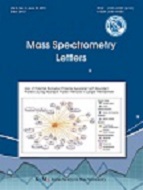
- P-ISSN 2233-4203
- E-ISSN 2093-8950



Various efforts have been developed to improve sample preparation steps, which strongly depend on hands-on processes for accurate and sensitive quantitative proteome analysis. In this study, we carried out heating the sample prior to trypsin digestion using an instrument to improve the tryptic digestion process. The heat shock generated by the system efficiently denatured proteins in the sample and increased the reproducibility in quantitative proteomics based on peptide abundance measurements. To demonstrate the effectiveness of the protocol, three cell lines (A human lung cancer cell line (A549), a human embryonic kidney cell line (HEK293T), and a human colorectal cancer cell line (HCT-116)) were selected and the effect of heat shock was compared to that of normal tryptic digestion processes. The tryptic digests were desalted and analysed by LC-MS/MS, the results showed 57 and 36% increase in the number of identified unique peptides and proteins, respectively, than conventional digestion. Heat shock treated samples showed higher numbers of shorter peptides and peptides with low inter-sample variation among triplicate runs. Quantitative LC-MS/MS analysis of heat shock treated sample yielded peptides with smaller relative error percentage for the triplicate run when the peak areas were compared. Exposure of heat-shock to proteomic samples prior to proteolysis in conventional digestion process can increase the digestion efficiency of trypsin resulting in production of increased number of peptides eventually leading to higher proteome coverage.
Boja, E. S.. (2012). . Proteomics, 12, 1093-.
Zhang, Y.. (2013). . J. Am. Chem. Soc, 113, 2343-.
Wisniewski, J. R.. (2009). . Nat. Methods, 6, 359-.
Proc, J. L.. (2010). . J. Proteome. Res, 9, 5422-.
Glatter, T.. (2012). . J. Proteome. Res, 11, 5145-.
Leon, I. R.. (2013). . Mol. Cell. Proteomics, 12, 2992-.
Kulak, N. A.. (2014). . Nat. Methods, 11, 319-.
Hustoft, H. K.. (2012). . Int. Proteomics, 73, -.
Capelo, J. L.. (2009). . Anal. Chim. Acta, 650, 151-.
Weston, L. A.. (2013). . Anal. Methods-UK, 5, 4615-.
Sun, W.. (2006). . Mol. Cell. Proteomics, 5, 769-.
Montfort, B. A. v.. (2002). . J. Mass. Spectrom, 37, 322-.
Svensson, M.. (2009). . J. Proteome. Res, 8, 974-.
Kennedy, S. A.. (2011). . Proteomics, 11, 2560-.
Kultima, K.. (2015). . J. Proteomics, 75, 145-.
Albert-Baskar Arul. (2013). An Automated High Throughput Proteolysis and Desalting Platform for Quantitative Proteomic Analysis. Mass Spectrometry Letters, 4(2), 25-29. http://dx.doi.org/10.5478/MSL.2013.4.2.25.
Eng, J. K.. (2008). . J. Proteome. Res, 7, 4598-.
Klimek, J.. (2007). . J. Proteome. Res, 7, 96-.
Tsou, C. C.. (2010). . Mol. Cell. Proteomics, 9, 131-.
Zhan, X.. (2010). . BMC Med. Genomics, 3, 13-.
Nicole, N. K.. (2007). . J. Biol. Chem, 282, e23-.
Geiger, T.. (2012). . Mol. Cell. Proteomics, 11, M111-.
Bantscheff, M.. (2012). . Anal. Bioanal. Chem, 404, 939-.
Tran, B. Q.. (2010). . J. Proteome. Res, 10, 800-.
Walker, J.. (2005). The Proteomics Protocols Handbook:Humana Press.
Kyte, J.. (1982). . J. Mol. Biol, 157, 105-.
Ragoonanan, V.. (2008). . Biophys. J, 94, 2212-.
Grassl, J.. (2009). . Proteomics, 9, 4616-.